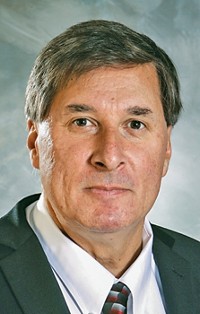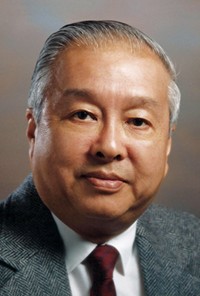Advertisement
Grab your lab coat. Let's get started
Welcome!
Welcome!
Create an account below to get 6 C&EN articles per month, receive newsletters and more - all free.
It seems this is your first time logging in online. Please enter the following information to continue.
As an ACS member you automatically get access to this site. All we need is few more details to create your reading experience.
Not you? Sign in with a different account.
Not you? Sign in with a different account.
ERROR 1
ERROR 1
ERROR 2
ERROR 2
ERROR 2
ERROR 2
ERROR 2
Password and Confirm password must match.
If you have an ACS member number, please enter it here so we can link this account to your membership. (optional)
ERROR 2
ACS values your privacy. By submitting your information, you are gaining access to C&EN and subscribing to our weekly newsletter. We use the information you provide to make your reading experience better, and we will never sell your data to third party members.
Environment
ACS Honors Heroes of Chemistry 2005
Chemists accept awards for developments that have helped people and the environment
by Linda R. Raber
September 26, 2005
| A version of this story appeared in
Volume 83, Issue 39

Multidisciplinary teams from Colgate-Palmolive, ExxonMobil and Albemarle, IBM, Johnson & Johnson Pharmaceutical Research & Development, and Novartis were recognized as Heroes of Chemistry at the recent ACS national meeting in Washington, D.C. About 150 attendees lauded the companies and the 18 research chemists at a reception and banquet held on Aug. 28.
The awards, now in their eighth year, specifically honor "chemical innovators whose work has led to the welfare and progress of humanity" in a significant way in the past decade. Cited in this year's crop of awards were revolutionary treatments for psychosis, myeloid leukemia, and dental disease; a process that yields cleaner gasoline; and materials to make smaller, denser computer chips and microprocessors.
In this awards program, individuals are nominated by their companies, and the winners are chosen by an ACS panel in recognition of industrial work that has led to the successful development and commercial sale of a technological product.
Addressing the banquet attendees, ACS President William F. Carroll said: "Heroes save lives and change things for the better. Through their inventions, these Heroes of Chemistry have done just that. We at ACS celebrate them and the thousands of others who bring the benefits of chemistry to us all every day."
Following are descriptions of the companies' products and achievements, followed by the names of the 18 people selected as this year's Heroes of Chemistry.
Colgate-Palmolive, Piscataway, N.J., was honored for the development of Colgate Total toothpaste, the first toothpaste approved by the Food & Drug Administration to fight cavities, gingivitis, plaque, tartar, and bad breath for up to 12 hours. Colgate Total contains the broad-spectrum antibacterial compound triclosan, which has been endorsed by professional dental associations throughout the world. In addition to triclosan, Colgate Total contains a methoxyethylene-maleic anhydride copolymer (Gantrez) that keeps the antiseptic in contact with teeth and gums long after brushing.

ExxonMobil and Albemarle developed SCANfining and second-generation SCANfining II--catalytic processes that significantly lower the amount of sulfur in gasoline. The processes, used in conjunction with advanced treatment of vehicle exhaust emissions, aim to improve air quality. Over the past 30 years, large reductions in hydrocarbon, nitrogen oxide, and carbon monoxide emissions have been achieved in the U.S. through cleaner burning fuels and improved vehicle technology. Government mandates are now requiring even lower vehicle emissions and lower sulfur fuels. SCANfining uses a novel, highly selective catalyst in a conventional hydrotreating process configuration to achieve increased hydrodesulfurization while minimizing alkene saturation and hydrogen consumption. In this way, SCANfining reduces octane loss by up to 80% versus traditional hydrotreating processes.
IBM developed chemically improved materials for creating smaller, denser computer chips and microprocessors. Before IBM developed these new materials, the industry was facing a roadblock: Prevailing photolithography technology could not produce the smaller features needed to make more advanced microelectronics. IBM's family of chemically amplified photoresist materials uses a self-sustaining catalytic process to provide the improved resolution required to create the smaller features. Now used universally, these materials have permitted the miniaturization of electronics that have enabled such diverse computing advancements as teraflop supercomputers, global-positioning receivers, multifunction cell phones, devices that improve health care delivery, and expansion of the Internet to enable mapping of the human genome.
Johnson & Johnson Pharmaceutical Research & Development developed Risperdal, which has helped advance antipsychotic drug therapies. Risperdal is a prescription medication approved by FDA for the treatment of bipolar I disorder or to treat acute to manic or mixed episodes associated with bipolar I disorder. FDA recently approved it for treating bipolar mania. Risperdal is approved for use as therapy alone or in combination with drugs called mood stabilizers, such as lithium or valproate. Symptoms of bipolar mania are thought to be caused by imbalances of dopamine and serotonin, chemicals in the brain. How Risperdal works is unknown, but it seems to adjust the balance of dopamine and serotonin. While it's not a cure, Risperdal may help control symptoms, allowing patients to reconnect with their lives.
Novartis developed Gleevec, a new class of molecular medicine that specifically targets an enzyme responsible for the growth of cancer cells in patients with chronic myeloid leukemia. Historically, chronic myeloid leukemia has been nearly always fatal. In clinical trials with Gleevec, the white blood cell count returned to normal for 98% of chronic myeloid leukemia patients treated with the medication. Unlike traditional cancer treatment, which affects normal as well as cancer cells, this new therapy more often spares the normal tissue, avoiding some of the serious side effects seen with some chemotherapies.
INDIVIDUALS HONORED
COLGATE-PALMOLIVE

Abdul Gaffar is vice president of growth technology development, based in Piscataway, N.J. He received a Ph.D. in immunochemistry/microbiology in 1967 from Ohio State University.
EXXONMOBIL AND ALBEMARLE
Garland B. Brignac is an advanced research associate at ExxonMobil Process Research Laboratories, Baton Rouge, La. He received a B.S. in general studies in 1974 from Louisiana State University.
Bruce R. Cook is a senior research associate at ExxonMobil Research & Engineering, Annandale, N.J. He received a Ph.D. in chemistry in 1986 from the University of Illinois, Urbana-Champaign.
Richard A. Demmin is an engineering associate in the EMPR Compositional Modeling Section at ExxonMobil Research & Engineering, Paulsboro, N.J. He received a Ph.D. in 1986 in chemical engineering from the University of Pennsylvania.
John P. Greeley is an advanced engineering associate at ExxonMobil Research & Engineering, Fairfax, Va. He received a B.S. in chemical engineering in 1980 from Rutgers University.
Thomas R. Halbert is a distinguished research associate at ExxonMobil Process Research Laboratories, Baton Rouge. He received a Ph.D. in organic chemistry in 1977 from Stanford University.
Jeffrey L. Kaufman is a distinguished engineering associate at ExxonMobil Research & Engineering, Baytown, Texas. He received an M.S. in chemical engineering in 1972 from Purdue University.
Mark Lapinski, formerly of ExxonMobil, is a senior technical specialist at UOP, Des Plaines, Ill. He received a Ph.D. in chemical engineering in 1989 from the University of Texas, Austin.
Steve Mayo is development manager at Albemarle Catalysts in Houston. He received a B.S. in chemical engineering in 1983 from Texas A&M University.
Craig A. McKnight, formerly on loan to ExxonMobil Process Research Laboratories, is a senior research associate at Syncrude Canada, Edmonton, Alberta. He received a master's degree in chemical engineering in 1987 from Queens University, Kingston, Ontario.
Kenneth L. Riley, retired from ExxonMobil, is a senior scientist for Albemarle Catalysts, Houston. He received a Ph.D. in chemical engineering in 1967 from Louisiana State University.
IBM
Hiroshi Ito is a research staff member at IBM Research's Almaden Research Center, San Jose, Calif. Ito received a Ph.D. in chemistry in 1976 from the University of Tokyo.
C. Grant Willson, formerly with IBM Research, is now a professor in the department of chemical engineering and in the department of chemistry and biochemistry at the University of Texas, Austin. He received a Ph.D. in organic chemistry in 1973 from the University of California, Berkeley.
JOHNSON & JOHNSON PHARMACEUTICAL RESEARCH & DEVELOPMENT
Ludo Kennis is a senior research fellow at Johnson & Johnson Pharmaceutical R&D, a division of Janssen Pharmaceutica N.V., in Beerse, Belgium. He received a degree in industrial engineering in chemistry in 1966 from the University of Antwerp, Belgium.
NOVARTIS
Peter Graf is on the Exploratory Development Team at Novartis Institutes for BioMedical Research, Basel, Switzerland. He received a Ph.D. in biochemistry in 1972 from the University of Basel, Switzerland.
Ulrike B. Pfaar is an expert pharmacokineticist in the oncology business unit, Novartis AG, in Basel. She received a Ph.D. in physiological chemistry in 1988 from the University of Bonn, in Germany.
Peter M. Traxler, retired, is a consultant to Novartis and several start-up companies. He received a Ph.D. in organic chemistry in 1969 from the University of Basel.
Jürg Zimmermann is head of a unit at Novartis Institutes for BioMedical Research, in Basel. He received a Ph.D. in organic chemistry in 1988 from the Swiss Federal Institute of Technology, Zurich.







Join the conversation
Contact the reporter
Submit a Letter to the Editor for publication
Engage with us on Twitter